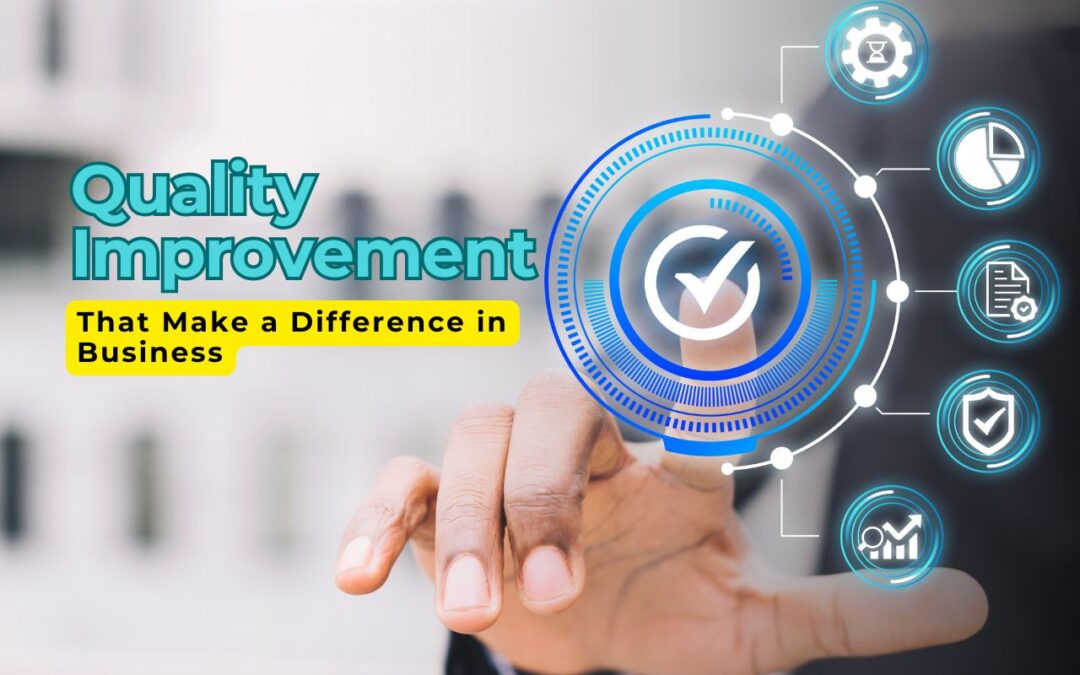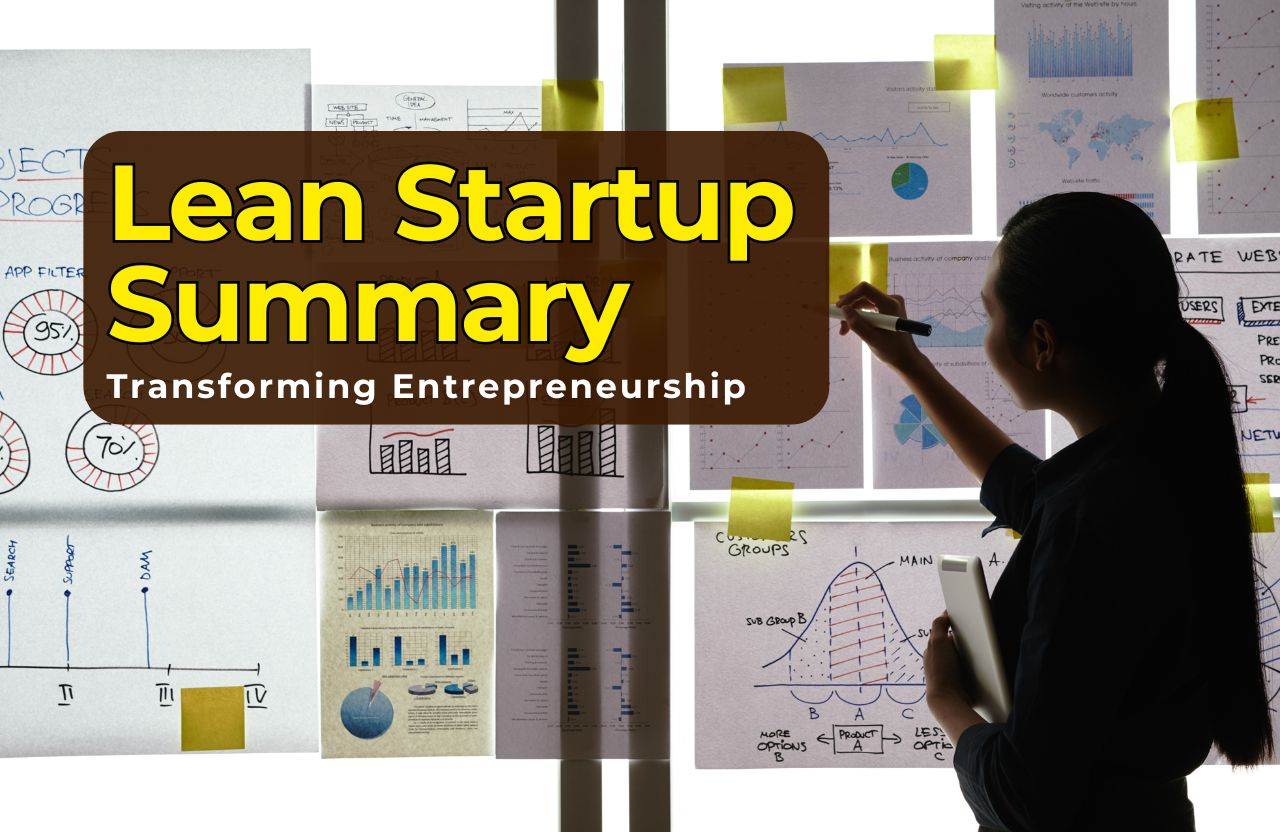In today’s ever-evolving business environment, the demand for consistent quality is greater than ever. Customers expect high standards, stakeholders demand efficiency, and global competition pushes organizations to innovate continuously. This is where quality improvement methods come in. Implementing structured approaches to improving quality is not just beneficial—it can be the defining factor between a business that thrives and one that fails.
In this comprehensive guide, we explore quality improvement strategies that genuinely make a difference in business operations. These methods have been successfully adopted by some of the world’s most successful companies and can be tailored to fit businesses of all sizes.
Why Focus on Quality Improvement?
Quality improvement is more than just delivering better products and services. It’s about enhancing every aspect of the business to create more value for customers while minimizing waste and inefficiencies. Here are the key reasons why businesses must prioritize quality improvement:
- Increased Customer Satisfaction: High-quality products and services build trust and customer loyalty.
- Operational Efficiency: Streamlined processes reduce time, errors, and costs.
- Competitive Advantage: Quality differentiates a brand from its competitors.
- Risk Reduction: Standardized processes lower the chance of compliance violations and legal issues.
- Profitability: Reduced waste and enhanced productivity lead to higher margins.
1. Six Sigma: Data-Driven Perfection
Overview:
Six Sigma is a powerful, data-driven methodology aimed at reducing defects and variability in processes. Its goal is to achieve near perfection, defined statistically as 3.4 defects per million opportunities.
Core Components:
- DMAIC Framework: Define, Measure, Analyze, Improve, Control
- Statistical Tools: Hypothesis testing, regression analysis, and process capability studies
Benefits:
- Enhanced process control
- Predictable quality outcomes
- Cost savings through waste reduction
Business Example:
General Electric attributed over $12 billion in savings to its Six Sigma initiative launched in the 1990s.
2. Lean Manufacturing: Eliminate Waste, Add Value
Overview:
Lean is a philosophy rooted in the Toyota Production System. It emphasizes the removal of waste (called “muda”) and ensures that every step in a process adds value to the customer.
Key Principles:
- Identify Value
- Map the Value Stream
- Create Flow
- Establish Pull
- Pursue Perfection
Lean Tools:
- 5S: Organizing the workplace for efficiency
- Kaizen: Continuous improvement through small changes
- Kanban: Visual workflow management
Business Example:
Toyota uses Lean to achieve high efficiency and exceptional product quality, making it a global leader in the automotive industry.
3. Total Quality Management (TQM): Quality as a Culture
Overview:
TQM is a company-wide approach that focuses on long-term success through customer satisfaction. It involves all employees and departments working together to improve processes, products, and services.
Core Elements:
- Customer focus
- Total employee involvement
- Integrated system
- Strategic approach
- Continuous improvement
Tools:
- Quality function deployment (QFD)
- Benchmarking
- Failure mode and effects analysis (FMEA)
Real-World Impact:
Ford Motor Company used TQM to recover from declining sales and regain market share in the 1980s.
4. ISO 9001: Quality Management System Standard
Overview:
ISO 9001 is an international standard for quality management systems (QMS). It provides a framework for companies to ensure they meet customer and regulatory requirements.
Key Requirements:
- Leadership commitment
- Risk-based thinking
- Process approach
- Continuous improvement
Benefits:
- Enhanced credibility
- Improved risk management
- Consistent quality across the organization
Certification Advantage:
Certified companies often gain access to global markets and government contracts more easily.
5. PDCA Cycle: Iterative Improvement
Overview:
The Plan-Do-Check-Act (PDCA) cycle, also known as the Deming Cycle, is a repetitive four-stage model for continuous improvement.
Steps:
- Plan: Identify the problem and propose a solution.
- Do: Implement the plan on a small scale.
- Check: Analyze the results to see if it worked.
- Act: If successful, implement on a larger scale; otherwise, revise the plan.
Use Cases:
PDCA is widely used in quality assurance, project management, and operational strategies.
6. Benchmarking: Learning from the Best
Overview:
Benchmarking involves comparing your business performance metrics with best-in-class companies to identify areas for improvement.
Types:
- Internal Benchmarking: Within your own organization
- Competitive Benchmarking: Against direct competitors
- Functional Benchmarking: Across industries
Key Metrics to Compare:
- Productivity
- Customer satisfaction
- Cycle time
- Cost per unit
Business Example:
Xerox used benchmarking in the 1980s to identify and close gaps in performance, leading to a major turnaround.
7. Root Cause Analysis (RCA): Addressing the Core Problem
Overview:
RCA is a problem-solving method aimed at identifying the fundamental cause of a defect or issue.
Tools:
- Fishbone Diagram (Ishikawa): Visualizing potential causes
- 5 Whys: Asking “why” repeatedly until the root cause is identified
- Pareto Analysis: Focusing on the most significant causes
Why It Works:
Solving root causes rather than symptoms ensures long-lasting solutions and prevents recurrence.
Example:
In healthcare, RCA is used extensively to reduce medical errors and enhance patient safety.
8. Business Process Reengineering (BPR)
Overview:
BPR involves radically redesigning core business processes to achieve dramatic improvements in productivity, cycle times, and quality.
Process:
- Identify key processes
- Rethink how work is done
- Use technology to streamline operations
- Implement and monitor changes
Results:
Companies using BPR have reported reductions in process time by 60-70% and cost savings of up to 50%.
Case Study:
Procter & Gamble used BPR to redesign its supply chain, improving delivery times and cutting costs.
9. Statistical Process Control (SPC)
Overview:
SPC uses statistical methods to monitor and control processes. This ensures that the process operates efficiently, producing more specification-conforming products with less waste.
Tools:
- Control charts
- Histograms
- Process capability analysis
Advantages:
- Early detection of problems
- Reduced variability
- Improved consistency
Application:
SPC is heavily used in manufacturing, pharmaceuticals, and food production.
10. Agile Methodology for Quality in Project Management
Overview:
Agile is a methodology rooted in software development that focuses on incremental delivery, collaboration, and responsiveness to change.
Key Elements:
- Sprints (time-boxed iterations)
- Daily stand-ups
- Retrospectives
- Continuous integration and testing
Benefits for Quality:
- Faster feedback loops
- Adaptive planning
- High customer involvement ensures that the final product meets expectations
Case in Point:
Spotify uses Agile to scale innovation and deliver quality music experiences globally.
How to Choose the Right Method
Choosing the right quality improvement method depends on:
- Business Size and Industry
- Specific Challenges
- Available Resources
- Organizational Culture
For example:
- A manufacturing firm may benefit most from Lean and Six Sigma.
- A service-based company might adopt TQM and PDCA.
- A startup could gain agility and speed through Agile practices.
Implementing Quality Improvement in Your Business
1. Conduct a Quality Audit
Assess your current processes and identify areas of improvement.
2. Set Clear, Measurable Goals
Align quality goals with business objectives.
3. Train Employees
Empower your team with the knowledge and tools to succeed.
4. Monitor and Measure
Use KPIs (Key Performance Indicators) and customer feedback.
5. Continuous Review
Adapt and refine methods based on results and market changes.
Final Thoughts
Quality improvement is not a one-time initiative. It’s a continuous journey of identifying inefficiencies, understanding customer expectations, and adapting to change. Whether you’re leveraging the precision of Six Sigma, the efficiency of Lean, or the flexibility of Agile, these quality improvement methods can transform your business from the inside out.
“Quality means doing it right when no one is looking.” – Henry Ford
Start today. Audit your current practices, educate your team, and choose the right tools. The impact will be seen in customer smiles, efficient operations, and a stronger bottom line.













